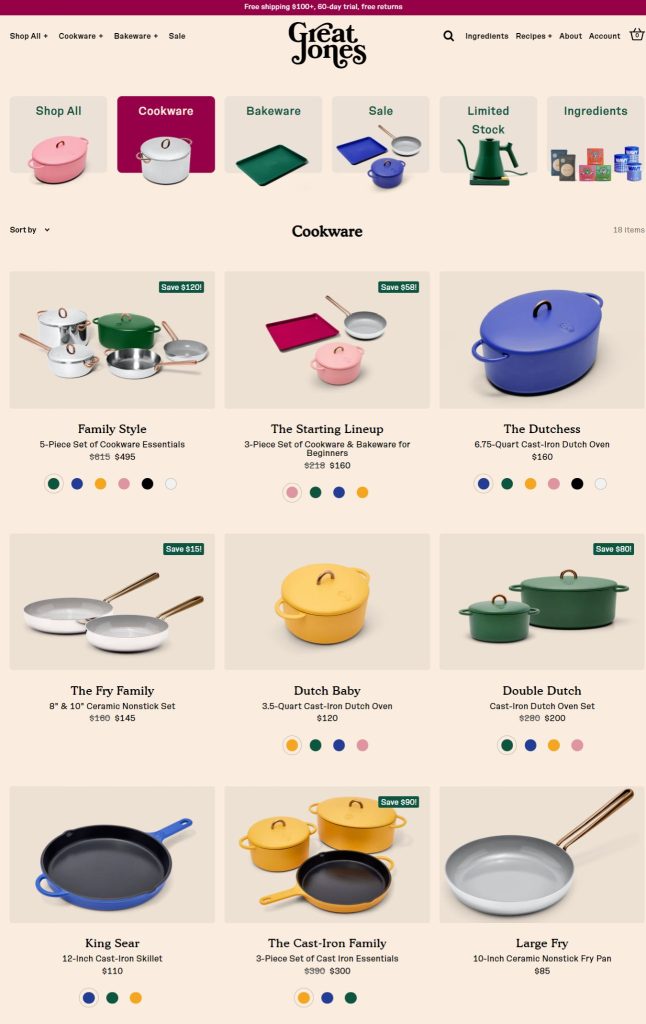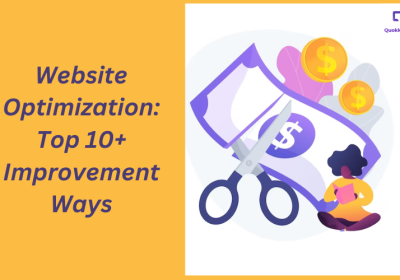
Important Strategies For Branding Your eCommerce Website
Every online seller once asked himself questions like:
- How to build an e-commerce brand?
- How to grow e-commerce brand?
The answer is quite simple, use an E-commerce branding strategy to grow your brand.
E-commerce branding is one of the most important aspects of any business. By understanding the different branding strategies available to ecommerce businesses, you can create a consistent presence across all channels and improve ROI significantly.
Ecommerce branding is a process by which an online retailer creates a consistent and credible message that allows customers to identify and connect with the store. Through well-executed branding, an ecommerce company can foster a positive user experience and increased conversion rates. Moreover, good ecommerce design can also help an online retailer stand out from its competitors.
Given the challenges faced by online retailers, it is essential that they focus on ecommerce branding. A well-executed branding strategy can help an online business achieve competitive advantages in the market. In addition, good design helps make your website easier to navigate and understand. If you are an online retailer looking to improve your customer experience or increase conversion rates, then you should consider implementing ecommerce branding strategies into your business plan.
Ecommerce companies operate on shifting margins and customers are price sensitive. It is therefore important for ecommerce brands to develop a strong branding strategy and build a loyal customer base.
Importance of branding for e-commerce website
Do you know the difference between Marketing & Branding?
Marketing is like asking someone out on a date. While branding is the reason, they say yes.
Ecommerce brand strategy is important for any business that wants to reach a large audience and increase ROI. With ecommerce growth outpacing traditional retail in recent years, it’s no surprise that more and more businesses are turning to online sales as the primary means of generating revenue.
Below are a few reasons why branding is important to your eCommerce store:
- Gives your business an identity
- Positive branding directly improves conversion rates & results in more sales
- Reach the target audience more effectively
- Attract more customers by communicating your goals & visions
- Higher revenues
- Lower costs
- Helps build loyalty among customers
- Improves brand recognition
- Improves customer satisfaction
- Make you stand out from the crowd
- Help to increase engagement
- Helps to make your brand memorable
In this article, we’ll explore different branding strategies for ecommerce brands and discuss how each approach can help your business succeed.
What type of branding strategy for an e-commerce website should be used?
Ecommerce brands have different needs than traditional brick-and-mortar stores. There are three main types of branding strategies for ecommerce businesses: aspirational, descriptive, and promotional. Each approach has its own benefits and drawbacks. If you’re not sure which type of branding strategy is right for your business, start by exploring your goals. Are you looking to build an exclusive brand? Attract new customers? Increase conversion rates? Once you know your goals, you can start choosing a marketing strategy that best supports them.
Top 10 E-commerce Branding Strategies
Business entrepreneurs must adopt a strategic branding approach if they want to prosper in the eCommerce industry. Successful eCommerce businesses have a distinct identity that sets them apart from their competitors and builds trust with consumers. Below, we have listed ten key steps to achieving brand success in the eCommerce market. When developing an E-commerce branding strategy for your online store, you need to consider the following:
1. Offer an easy return & refund policy

Do you have a return & refund policy at your ecommerce store? If not, you should definitely consider adding one. Returns are a part of the ecommerce process, and it’s important to be as fair as possible to your customers. The offer should be clear and easy to understand, and customers should be able to submit returns without any hassles.
Returns are a normal part of ecommerce. However, it’s important that returns are easy to do and understand for both the customer and the store. The return policy should be clear, with instructions on how to submit a return. Customers should also be able to track their order history to see whether they have made any returns in the past.
Offering a clear and easy return & refund policy can help reduce the number of returned items. It can also increase sales for your store because it will lead to increased customer loyalty. Having a well-implemented return & refund policy can make your ecommerce business more successful.
You can also add Magento 2 Store credit extension to your eCommerce store as it helps to convert the order refund into revenue with virtual credits which can be used by customers in their future purchases.
2. Define your business mission, core values, and vision

Your business mission should be crystal clear, and it should be something that you passionately believe in. Make sure your vision is equally strong and concise, as it needs to represent who you are as a company and what you aspire to achieve.
What makes your business unique? What are its core values? These should be reflected in the company’s name, logo, advertising campaigns, and products. If these values are not clear to potential customers, they may be more likely to switch to a competitor that shares the same values.
3. Develop a strong brand name and logo
The first step in any e-commerce branding strategy is determining what kind of brand you want to develop. When starting an online store, you need to determine what type of customer you are targeting and create a name and logo that reflects that. It is important to think about the kind of impressions your business will make before you start developing your website or branding materials.
Design a logo that represents your brand. Make sure your logo represents who you are as a company and echoes throughout all facets of your marketing campaigns and visual assets. Reflective fonts, simple shapes, and high-quality graphics will help make your logo stand out from the competition.
Here are some examples of popular brand name with logos



Establish a unified brand look across all your channels and products. This is key for building cohesive customer experiences and representative graphics that can be easily replicated and adapted on different platforms. Focus on typography, colour palette, user interface, and product design when creating your brand.
4. Choose an appealing design

Once you have decided on a name and logo, it is time to come up with an appropriate design for your website or product packaging. You should aim to create an aesthetic that is both professional and comfortable for customers to browse and purchase from. You don’t want your website or products to look old-fashioned – instead, try to create an aesthetic that will resonate with the target market.
Keep your target market in mind when developing product designs. When designing your website’s architecture, consider how a specific type of visitor might behave on different pages, identify popular search terms and then create copy relevant to those keywords, etc. Tailor your offerings to the needs of specific groups of customers by identifying distinct product categories or niches.
Also, keep track of industry trends and constantly update your designs to reflect what’s popular in the marketplace. For example, if you manufacture apparel items, keep up with styles that are currently hot on trend, so you can design items that look good and feel comfortable to wear.
Shopify offers several benefits for achieving an appealing design for your online store. With Shopify Development Services, you can unlock a multitude of advantages in crafting an attractive design for your online store. Its intuitive interface, adaptable themes, and vast resources empower you to fashion a visually stunning and immersive store design that resonates with your brand and amplifies the shopping experience for your valued customers.
5. Expand brand awareness & develop a brand strategy
Once you have defined your core values and established a good reputation among your target market, it is time to expand brand awareness. This can be done through various marketing channels such as social media channels, print media, radio, television, etc. A well-executed promotional campaign will help you attract new customers and deepen relationships with current ones.
Your brand strategy should consist of clear objectives and messaging across all channels of marketing (both online and off). This includes developing ad campaigns that target specific consumer demographics, developing viral content, designing website layouts that facilitate customer browsing, and more. Effective branding requires constant vigilance – regular reevaluation of current strategies to ensure they remain relevant and effective over time.
6. Build customer loyalty through product quality & value
A key principle of successful branding is providing customers with quality products at affordable prices. It’s important to focus on features that make each product unique (and desirable), while also being price-efficient, so customers don’t feel like they’re compromising on quality by opting for cheaper alternatives. With potential customers, loyalty comes increased word-of-mouth marketing referrals, which can further boost ROI for business entrepreneurs alike!
Also, be focused on targeted audiences. Not every customer is interested in your same brand of products or services. It is important to focus on targeted audiences who may be more likely to buy your products or sign up for your service. Segmenting the market by demographics (such as ages, income levels, etc.), interests (such as lifestyle choices), geographical locations, etc., can help in this process.
7. Incorporate effective SEO strategies
Since customers rely heavily on search engine results when looking for products and services, it is important to include effective SEO strategies in your branding efforts. This includes optimizing your website language so that it appears higher in search engine results pages (SERP) and writing clear and engaging content that will capture the attention of potential customers. Also, consider setting up Google AdSense ads on your site so that you can generate additional revenue from online traffic.
8. Cultivate positive reviews from past customers
One of the most important aspects of successful ecommerce branding is cultivating positive reviews from past customers who have interacted with your company in some way – whether it was through buying products or making a positive review online. This can be accomplished through customer service policies that answer frequently asked questions (FAQs) promptly, providing helpful guides and tutorials for new visitors, and monitoring user feedback responses regularly so that corrective actions can be taken as needed. Positive customer feedback plays an important role in helping potential investors assess risk when deciding whether or not to invest in a specific business venture – so cultivating high levels of customer satisfaction should be at the top of every ecommerce entrepreneur’s list
9. Social media channels
Use social media platforms like Facebook and Twitter regularly to post content related to your brand (passive posting is generally discouraged), connect with potential customers who may not have visited your website yet but would be interested in your products or services, provide support for current customers via engaging comments widgets on websites or social media posts, etc., and conduct regular market research through surveys/interviews with consumers/users about their thoughts on current industry trends/products – this will help guide future decision-making about product development as well as pricing & availability!
10. Build relationships with influential bloggers/vendors
One of the best ways to attract top-level visibility for your ecommerce business is by collaborating with influential bloggers who can share valuable information about your product category with their respective audiences. If possible, try reaching out to these influencers beforehand and offer them special incentives if they are interested in featuring your product on their blog or websites. As word spreads about your business, it will attract new customers who are looking for quality products in popular categories.
Set Your Brand Apart From The Crowd
There are numerous eCommerce branding tactics that can be used to reach out to potential customers and promote your brand effectively. Some key strategies include social media marketing, expanding brand awareness, search engine optimization (SEO), paid search Ads, email marketing, connecting with influencers, promoting products on various channels, etc. Once you have identified the strategies that work best for your business and choose the right tactics to employ, ensure that you measure performance regularly in order to make necessary changes/adjustments as needed.
Explore new marketing avenues because the possibilities are endless when it comes to innovative ways to generate leads & sell MORE!!! 🙂 !!






